The Yashica Electro 35 is one of those cameras that the “in-the-know” rangefinder experts insist we must own. It’s a classically styled full-frame 35mm camera with a nice lens that’s similar to many other cameras of the era (think of the Olympus 35RC, or the Canonet QL-17). A very nice, sharp, fast lens (f 1.7!) at a nice focal length (45mm) that’s perfect for everyday snapshots or street shooting.
I’m a sucker for advice from the cognoscenti, so when I learned about the Yashica I began hunting for one. I didn’t find anything that looked worth buying on eBay, but on a lark I checked the local Craigslist and found a decent-looking model for sale. I met the seller the next day at a coffee shop in Midtown Sacramento and bought the camera for less than his original asking price.
A Camera for the “Mad Men” Era
A little more online research about the Yashica turned up a lot of people with great things to say about the camera. It’s easy to use, pretty to look at, and produces nice images (within limits). It was quite well known and liked in the mid-1960s when it came out, and offered the average user the chance to own a high-end camera for a mid-range price. But to understand the original appeal of the camera, it’s helpful to start with that little “nuclear” symbol on the front.
That “nuclear” icon, in fact, doesn’t refer to nuclear energy but to electrons–in this case, the electrons that made the camera’s exposure system work. Keep in mind that this camera was introduced in the middle of the Mad Men era, at a time when miniaturized electronics were only starting to be widely available in a handful of consumer products. We were still a decade away from the pocket calculator and several decades away from computers and pocketable telephones, but the Yashica offered you the power of the electron shoved into a traditional rangefinder camera. That’s what the electrons on the from promised–a “space age” camera for the modern photographer. I can see Don Draper taking pictures of Sally with his Yashica! (Spiderman used one in the 2012 motion picture.)
Looking at it from today’s perspective, the camera’s magic seems quite mundane. But at the time, it was cutting edge.
Put in auto mode, the camera would measure the light reaching the sensor on the front (TTL metering was still years away) and adjust the exposure time based on the aperture selected. Here’s an ad from the era that explained how it worked:
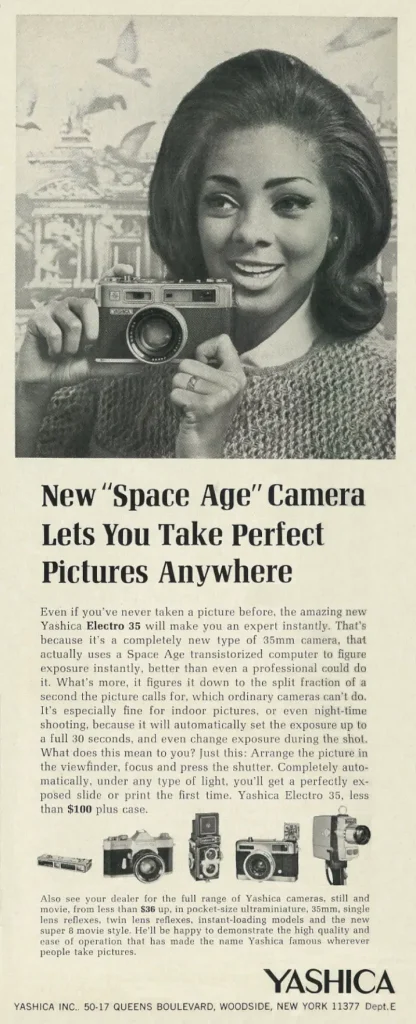
Using the Yashica
That’s basically it–an aperture-priority camera with a nice lens. But Yashica made some interesting decisions when setting up the Electro 35. First, and perhaps most importantly, it’s almost impossible to miss a low-light shot with this camera. The automatic exposure will keep the shutter open for up to 30 full seconds to gather enough light for an image. (It will even adjust the exposure to shoot, for instance, at 1/35th of a second if 1/30th isn’t quite right.) A little yellow light on the top of the camera (and in the viewfinder) will tell you when the shutter speed is getting to be too slow for hand-held shots, but it will take the photo no matter what. It’s no wonder than Yashica’s ads highlighted the camera’s low-light capabilities! Here’s a shot that I took in a dimly lit room (the camera was set down on a piece of furniture, and I used the self-timer to avoid camera shake).
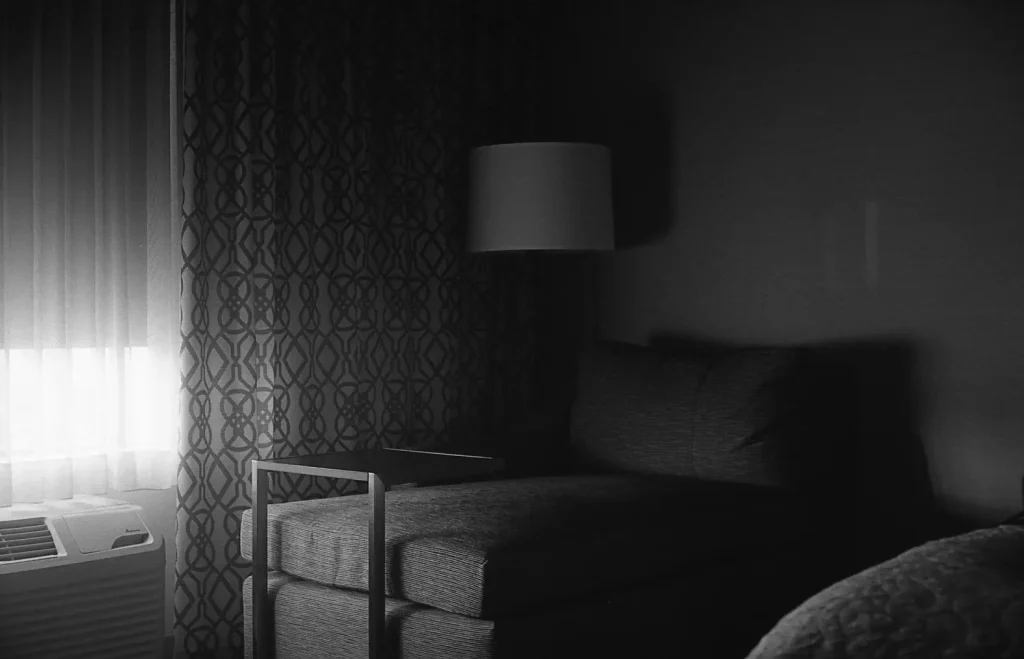
The camera also warns you when you’re about the overexpose the shot (with a red light this time), but again it will let you take the picture anyway. The viewfinder doesn’t include parallax lines, but that’s because the entire frame line indicator automatically moves down and to the right as you focus on close subjects. That’s a feature I’ve never seen on any other camera (although I’m sure somebody somewhere must have offered it).
One of the only quirks/difficulties with the camera is the battery that it needs to operate. The Electro 35 was designed around a now-unavailable mercury-based, 5.6-volt battery. However, it’s easy to work around that limitation, since the electronics aren’t as finicky about voltage as other old cameras. There are many workarounds that involve stacking a few new batteries or buying an adapter (the Yashica Guy is the source I used) to fit a 4LR44 cell into the same space. The battery test light also lights up the frame counter and is so bright that it can be used in a pinch as a small flashlight!
5 Frames at the Mission Inn
So … on to the 5 Frames! I took the Yashica on a recent business trip, during which I met a friend at the historic Mission Inn in Riverside, CA, for lunch. The Mission Inn is an eclectic historical landmark that has been in operation since 1876. It’s a jumble of architectural styles, from California Mission to what I would call “faux Gothic,” but it’s gorgeous and interesting and about as historic as anything in California gets. It seemed perfect to shoot with a semi-historic camera.
Here are the photos:
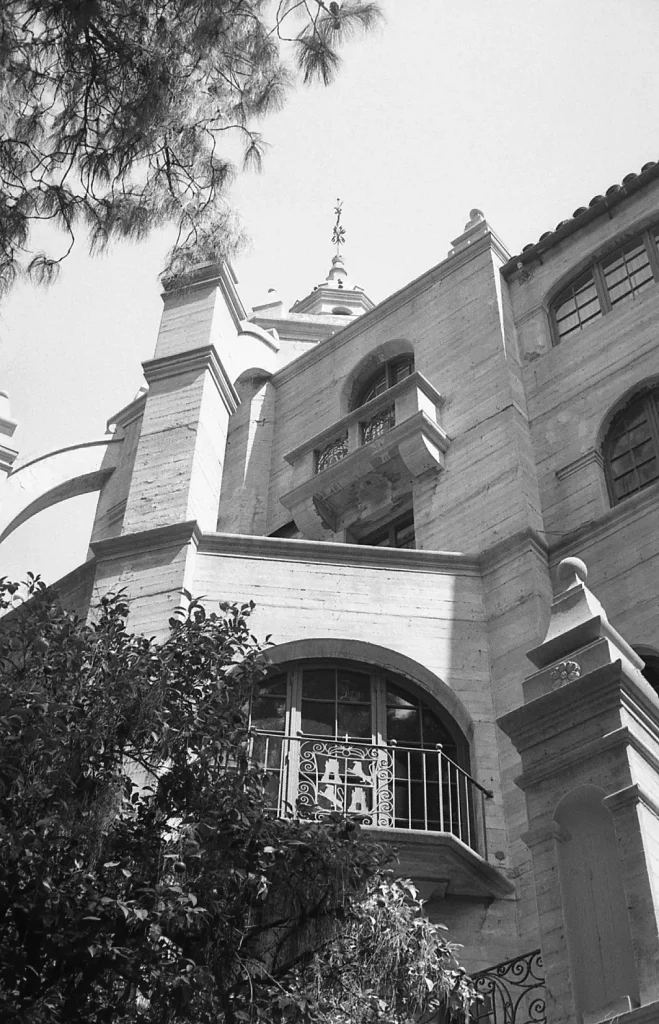
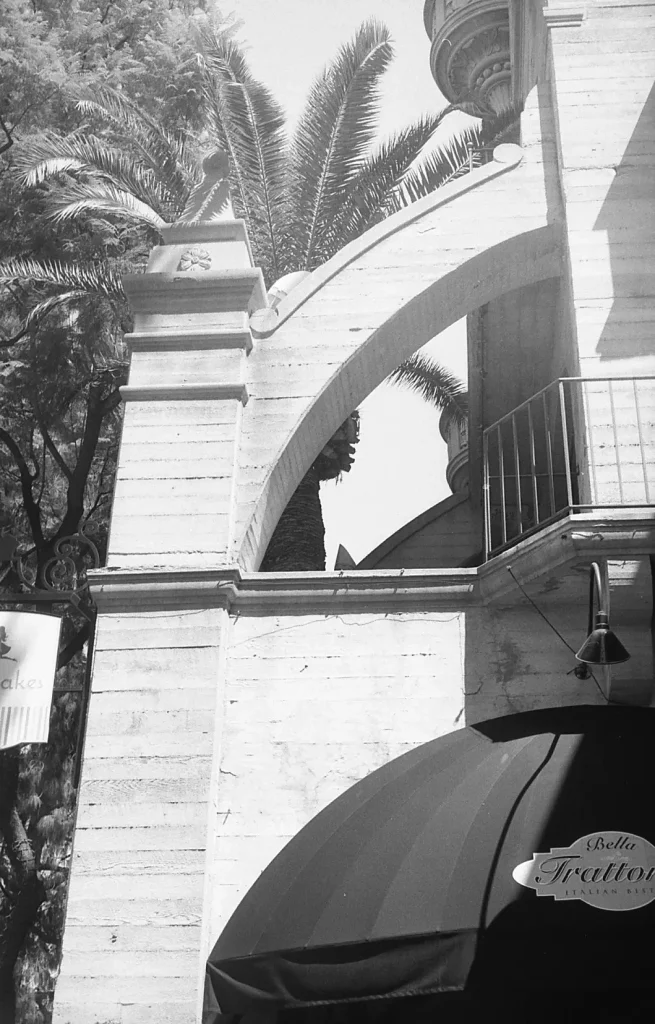
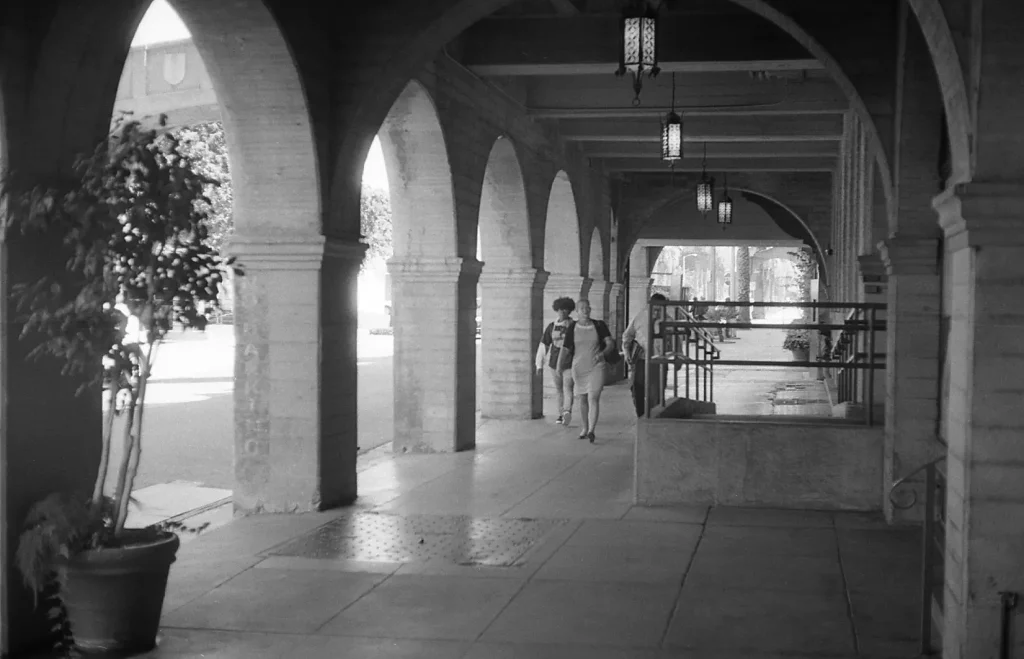
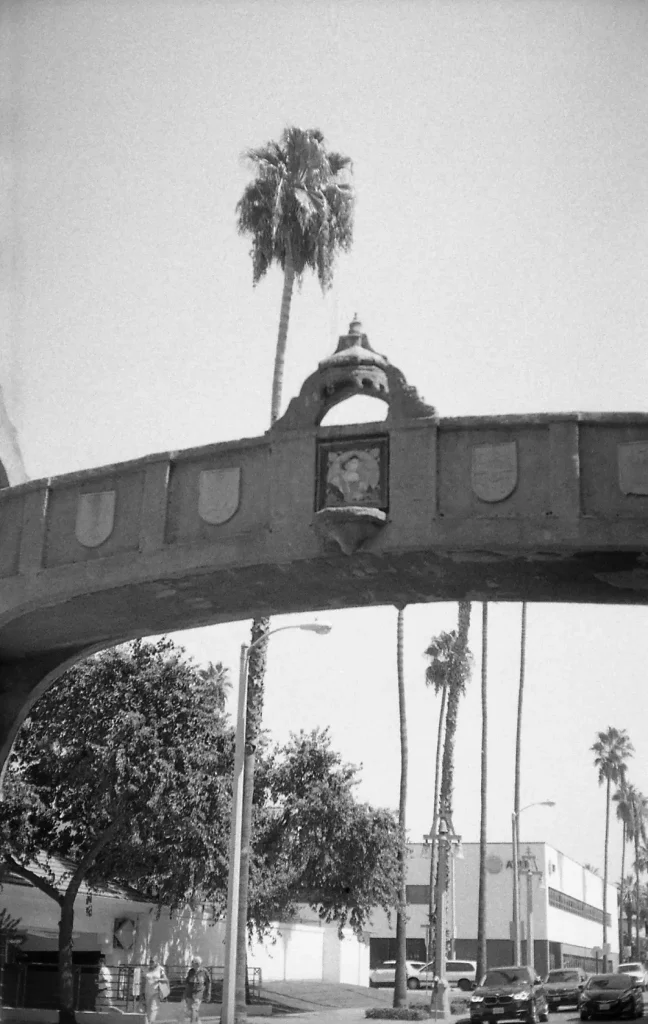
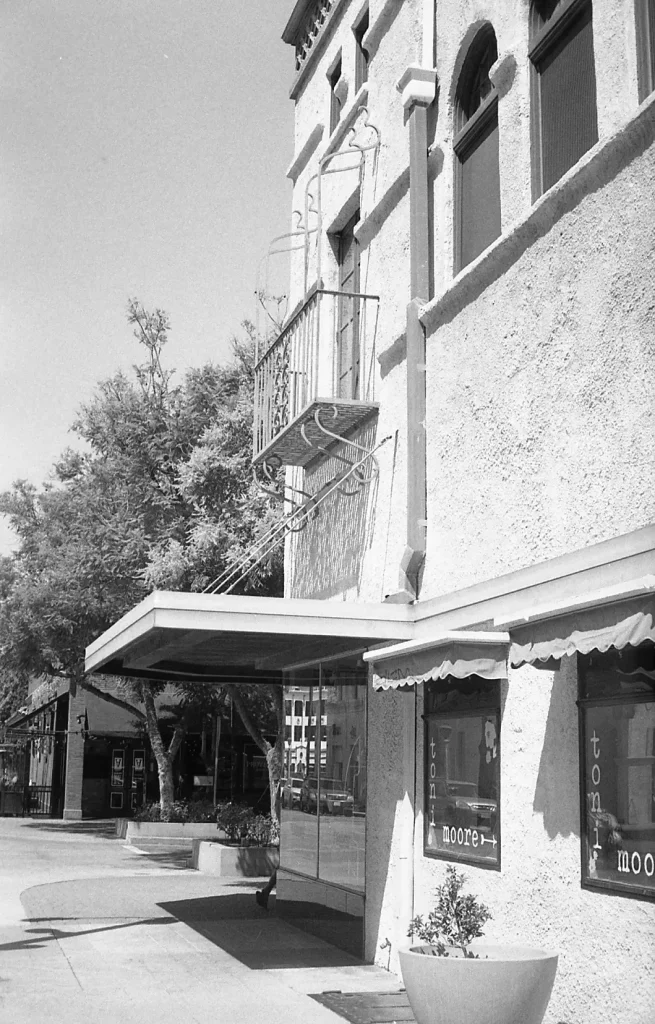
Epilogue
I’ve had great fun with the Yashica Electro 35. It’s not small, but not too big to comfortably carry with a neck strap. It takes nice pictures.
A lesson or two learned from using the Yashica: First, it’s very easy to use. the rangefinder patch in mine is bright and clear, and it’s very easy to nail the focus. Second, like many other cameras that measure all ambient light, it’s easy to fool the sensor. The Yashica excels when the entire scene is evenly lit. Throw in a bright source of light, and it will tend to underexpose everything else.
Hope you enjoyed these images. To see more of my pictures, check out my Instagram feed: Instagram.com/Campyonlyguy
Share this post:









Comments
jeremy north on Yashica Electro 35 – A mini review at The Mission Inn – By Eric Norris
Comment posted: 22/10/2019
Peter on Yashica Electro 35 – A mini review at The Mission Inn – By Eric Norris
Comment posted: 22/10/2019
Comment posted: 22/10/2019
Alexander Seidler on Yashica Electro 35 – A mini review at The Mission Inn – By Eric Norris
Comment posted: 23/10/2019
that contacts all the metering (visual) and shutter release.
Very good camera.
eric on Yashica Electro 35 – A mini review at The Mission Inn – By Eric Norris
Comment posted: 25/10/2019
Despite I am a M Leica user, when I want to be light, this one, the Minolta Ho-Matic 7Sii and the Canonet QL17 GIII are my favorites with the Contax T.